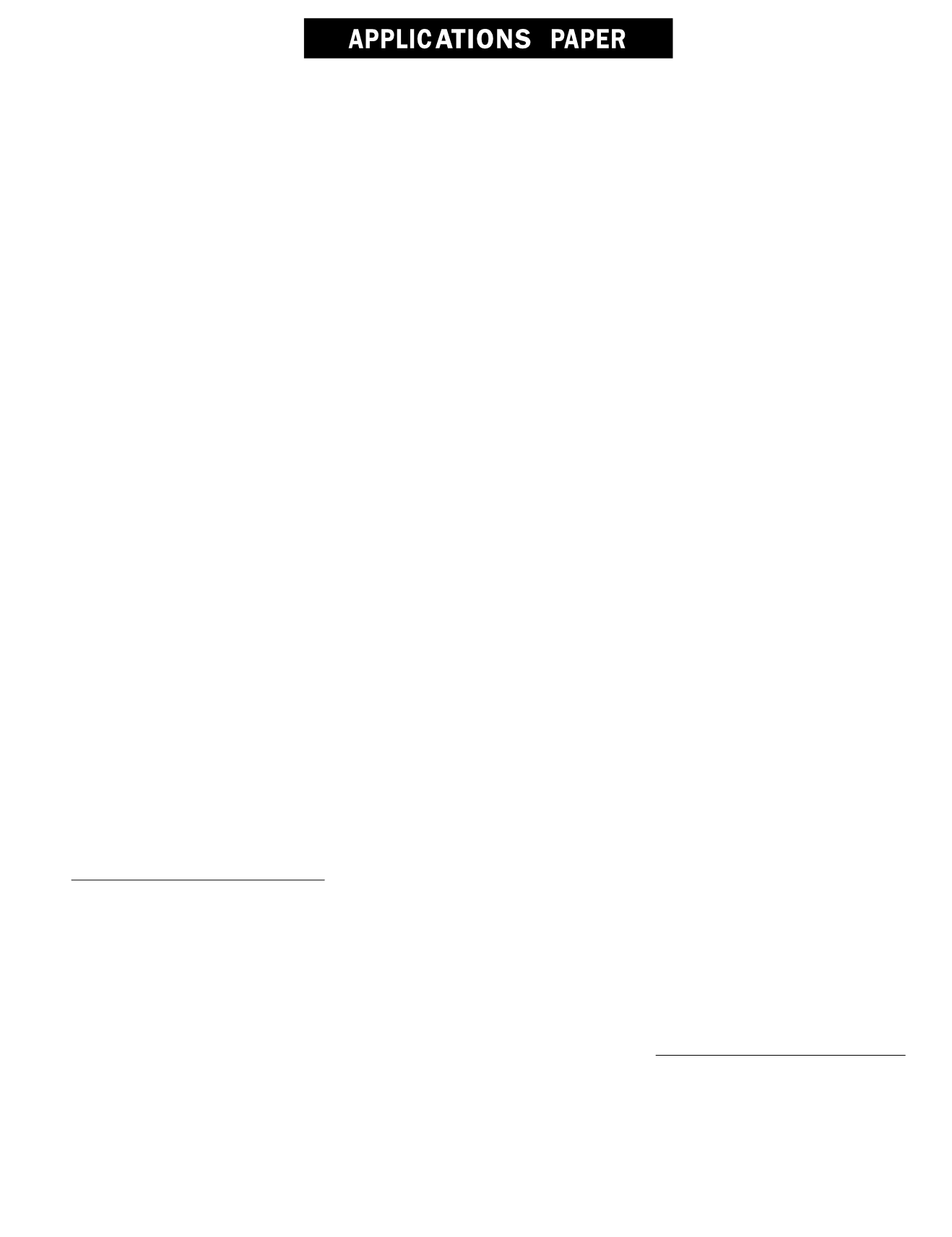
Bioenergy Crop Identification at Field Scale Using
VHR Airborne CIR Imagery
Muhammad Abdullah Sohl, Patric Schlager, Klaus Schmieder, and H.M. Rafique
Abstract
The present study is aimed at developing a methodology to ex-
tract maize, a predominant energy crop, and efficiently map its
spatial distribution in a Natura 2000 region of northern Germa-
ny. Following a
GEOBIA
approach, segmentation was performed
on two hierarchical levels. Level 1 consisted of field boundar-
ies, and level 2 represented variations within level 1. Decision
rules were developed for level 2 based on spectral information,
vegetation indices, standard deviations and knowledge of crop
phenology. For this purpose, first, level 2 image objects were
classified. Subsequently classification was shifted to level 1.
Maize covered 10.6 percent of total study area. The presented
methodology gives the advanced user the flexibility to integrate
expert knowledge in the classifier. In addition, the implementa-
tion time of decision rules was very fast and helped to produce
results with high accuracy.
Introduction
Energy is a major contributor to economic and social devel-
opment. However, the way it is produced, distributed, and
used can have direct impact on several climatic issues and
environmental resources (Kaltschmitt and Weber, 2006). Due
to the adverse effects of conventional energy resources on
the environment, and the finite supply of fossil fuels, many
countries are converting towards renewable energy supplies.
Hydropower, wind power, solar energy, geothermal, and
bioenergy are key renewable energies. Among these, bioener-
gy plays an important role due to its flexibility of supplying
heat, electricity, fuel, and capacity for storage. Over recent
years, many communities and local municipalities in Germa-
ny have set themselves the target of achieving self-sufficiency
with renewable energies. In addition to that, political support
programs such as “Renewable Energies Act” have created a
boom in the renewable energy market. Consequently, large
maize covers (bioenergy crop) appeared in Lüchow-Dannen-
berg (northern Germany) and its Natura 2000 protected sites
(Dziewiaty
et al.
(2007). Maize as habitat has disadvantage
properties for agricultural breeding birds, which are used as
indicator species for biodiversity on agricultural sites (ibid).
Area and yield of energy crops grown within a certain region
have been documented by agricultural statistics; the spatial
distribution is difficult to access by traditional methods. How-
ever, it is of great interest since spatial land-use patterns affect
habitat quality.
Land-cover classification has been carried out at a pixel
level since the launch of the Landsat satellites, and it is still
widely implemented. Yet, in very high-resolution (
VHR
) data,
single pixels do not represent objects of interest (geons) be-
cause the pixel size is far below the targeted object size. Thus,
GEographic Object Based Image Analysis (
GEOBIA
) or
OBIA
evolved as a new paradigm (Blaschke
et al.,
2014).
GEOBIA
al-
lows incorporating image information beyond the spectral in-
formation used in pixel-based image analysis, such as shape,
texture, and relationship of objects (Hay and Blaschke, 2010).
This resolved the “salt and pepper” problem found in tradi-
tional pixel-based classification of
VHR
data (Yu
et al.,
2006;
Pu
et al.,
2011).
GEOBIA
is far superior to pixel based classi-
fication when working with
VHR
data (Castilla
et al.,
2008,
Johansen
et al.,
2010; Benjamin
et al.,
2013; Tehrany
et al.,
2013). Advances in object-based classification are reviewed
in Alpin and Smith (2008) and Arvor
et al.
(2013), whereas
Blaschke (2010) did the most comprehensive literature review
on
GEOBIA
research to date.
Numerous methods have been adopted recently to classify
agricultural land cover.
GEOBIA
proved to be more successful
in land-cover mapping due to the fact that crops and habitats
exist in patches rather than small elements (Hernando
et al.,
2012b). As a result,
GEOBIA
approaches are increasingly prac-
ticed for land-cover classification and habitat mapping (Hay
and Castilla, 2008; Tiede
et al.,
2008; Addink
et al.,
2012;
Hernando
et al.,
2012a). Within
GEOBIA
, Nearest Neighbor (
NN
)
and rule sets have proved their effectiveness to classify maize
(Xu
et al.,
2004; Brooks
et al.
2006; Yu
et al.,
2006; Tehrany,
et al.,
2013). Integration of expert knowledge in the classifi-
cation (pixel-based or object-based) have revealed increase
in accuracy (Bach
et al.,
2003; Stolz
et al.,
2005; Lucas
et al.,
2007; Conrad
et al.,
2010; Rittl
et al.,
2013). Pena-Barragan
et
al
. (2011) carried out object-based classification of different
crops using multitemporal
ASTER
satellite data in Yolo County,
California. Numerous vegetation indices, textural features and
knowledge of crop phenology were integrated into the classi-
fication process and the overall accuracy of the classification
reached 79 percent. De-Wit and Clevers (2004) documented
per-field classification within
GEOBIA
framework to be three-
times faster and more efficient than pixel-based classification.
Agriculture land over and habitat mapping are often per-
formed on multi-temporal data in order to achieve high level of
Muhammad Abdullah Sohl was with the Department of
Geomatics, Computer Science and Mathematics, Stuttgart
University of Applied Sciences, 70174 Stuttgart, Germany;
and currently with the Water Resource Division, National
Engineering Services Pakistan (Pvt) Limited, Lahore, Pakistan
(
).
Patric Schlager was with the Institute of Landscape and Plant
Ecology (320), University of Hohenheim, 70599 Stuttgart,
Germany; and currently with the Armenian National Agrarian
University, 74 Teryan, 0009 Yerevan, Armenia.
Klaus Schmieder is with the Institute of Landscape and Plant
Ecology (320), University of Hohenheim, 70599 Stuttgart,
Germany.
Hafiz Muhammad Rafique is with the School of Physical
Sciences, Department of Physics, University of the Punjab,
Quaid-i-Azam, Lahore 54590, Pakistan.
Photogrammetric Engineering & Remote Sensing
Vol. 81, No. 8, August 2015, pp. 669–677.
0099-1112/15/669–677
© 2015 American Society for Photogrammetry
and Remote Sensing
doi: 10.14358/PERS.81.8.669
PHOTOGRAMMETRIC ENGINEERING & REMOTE SENSING
July 2015
669


